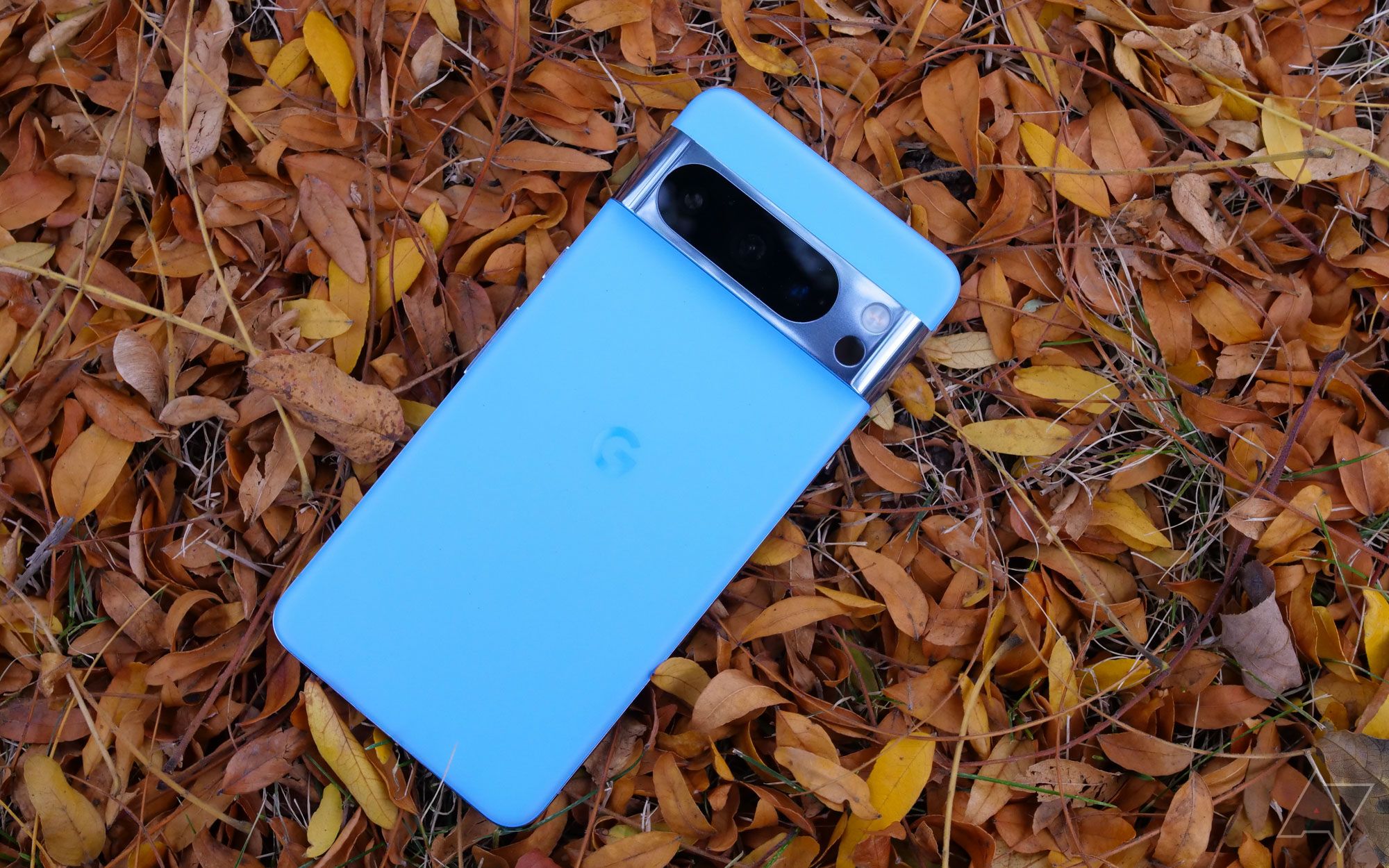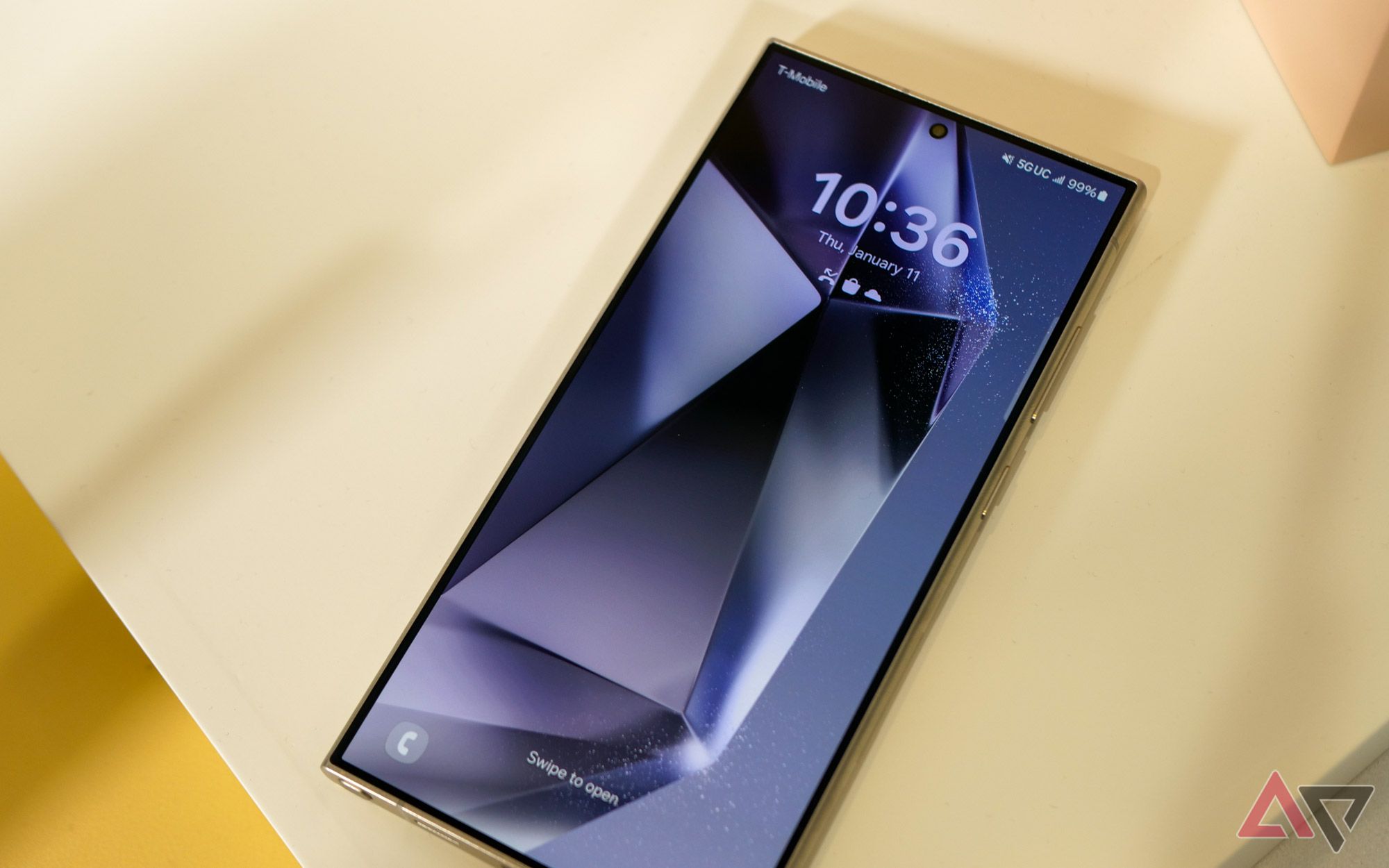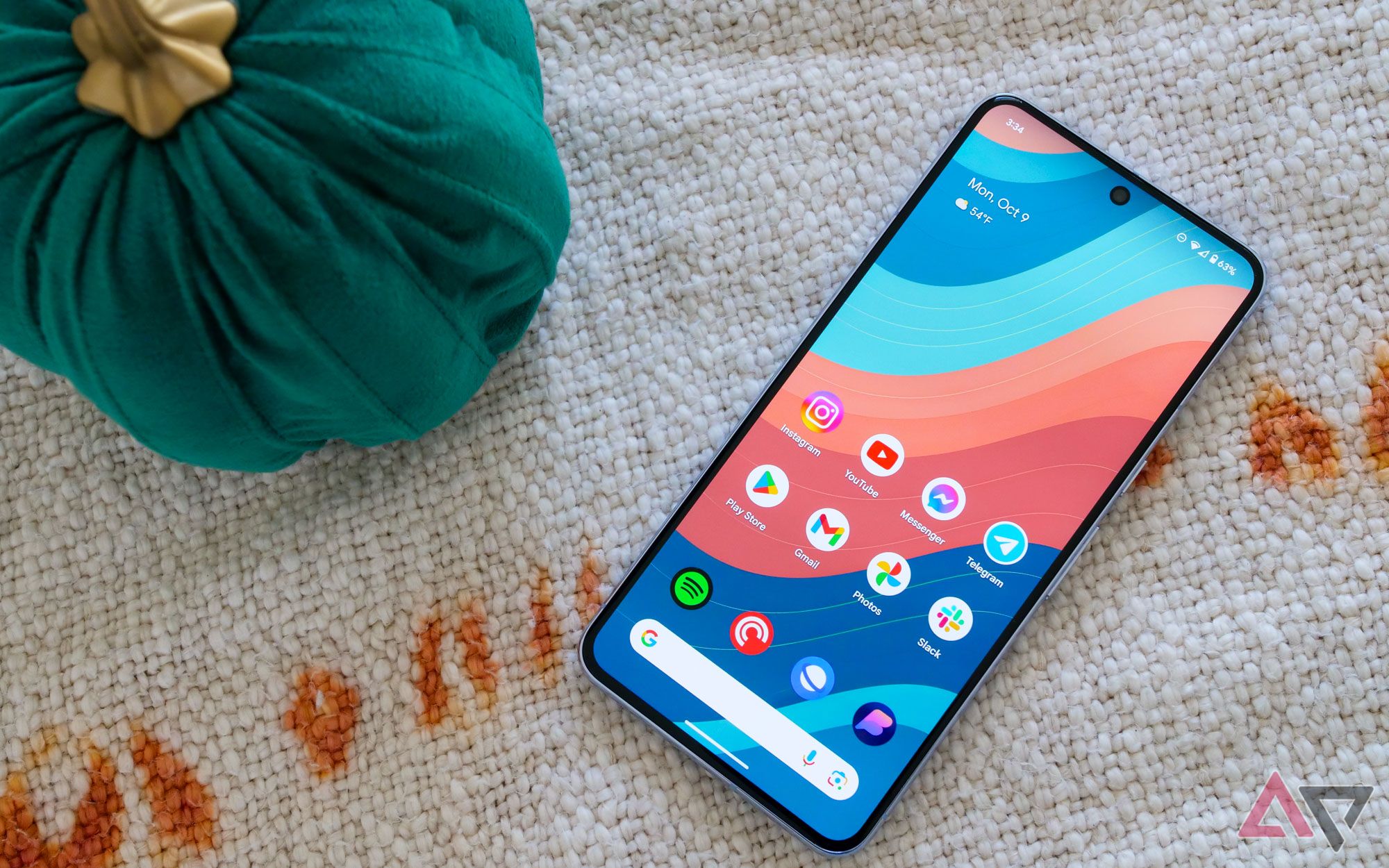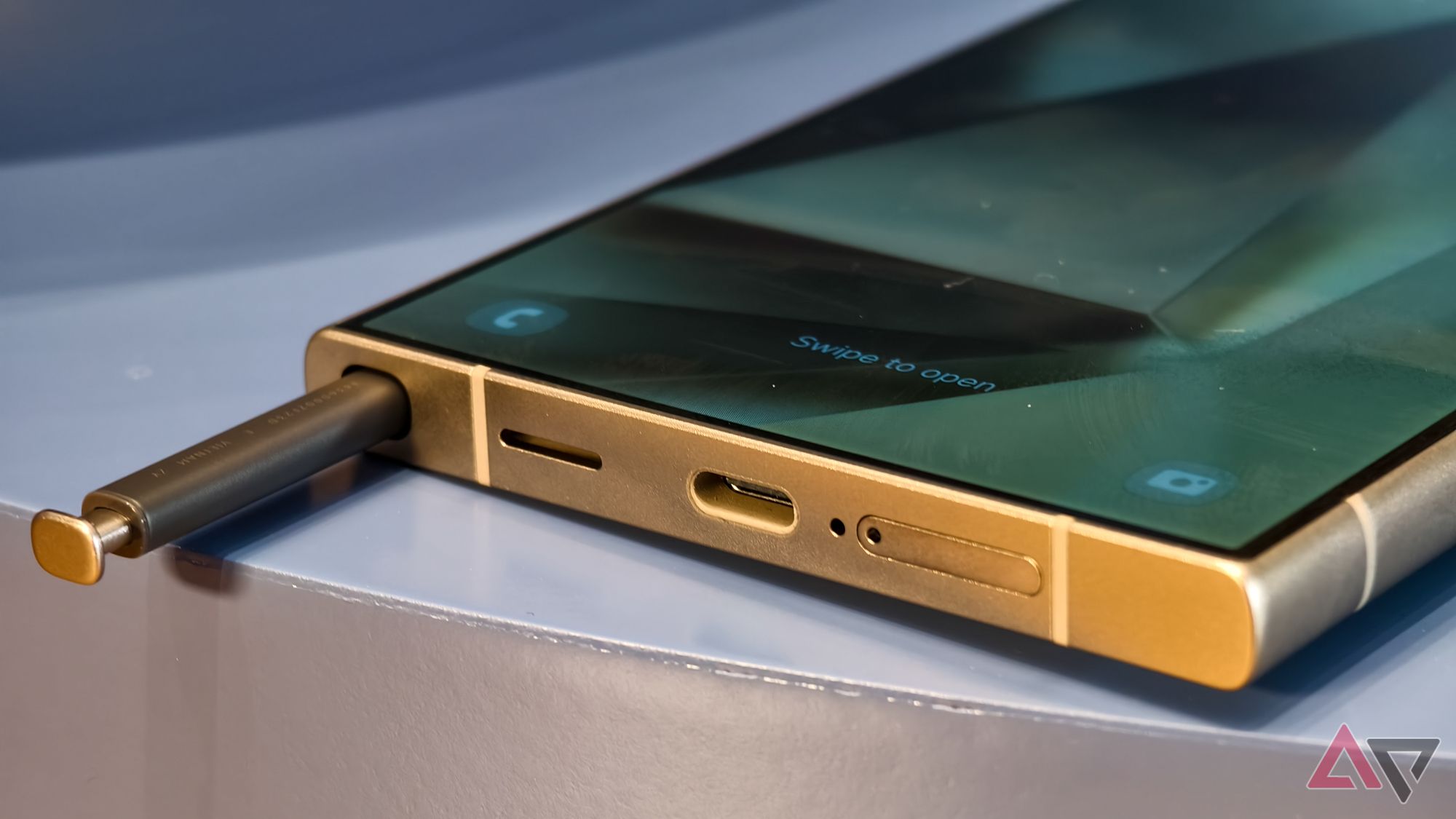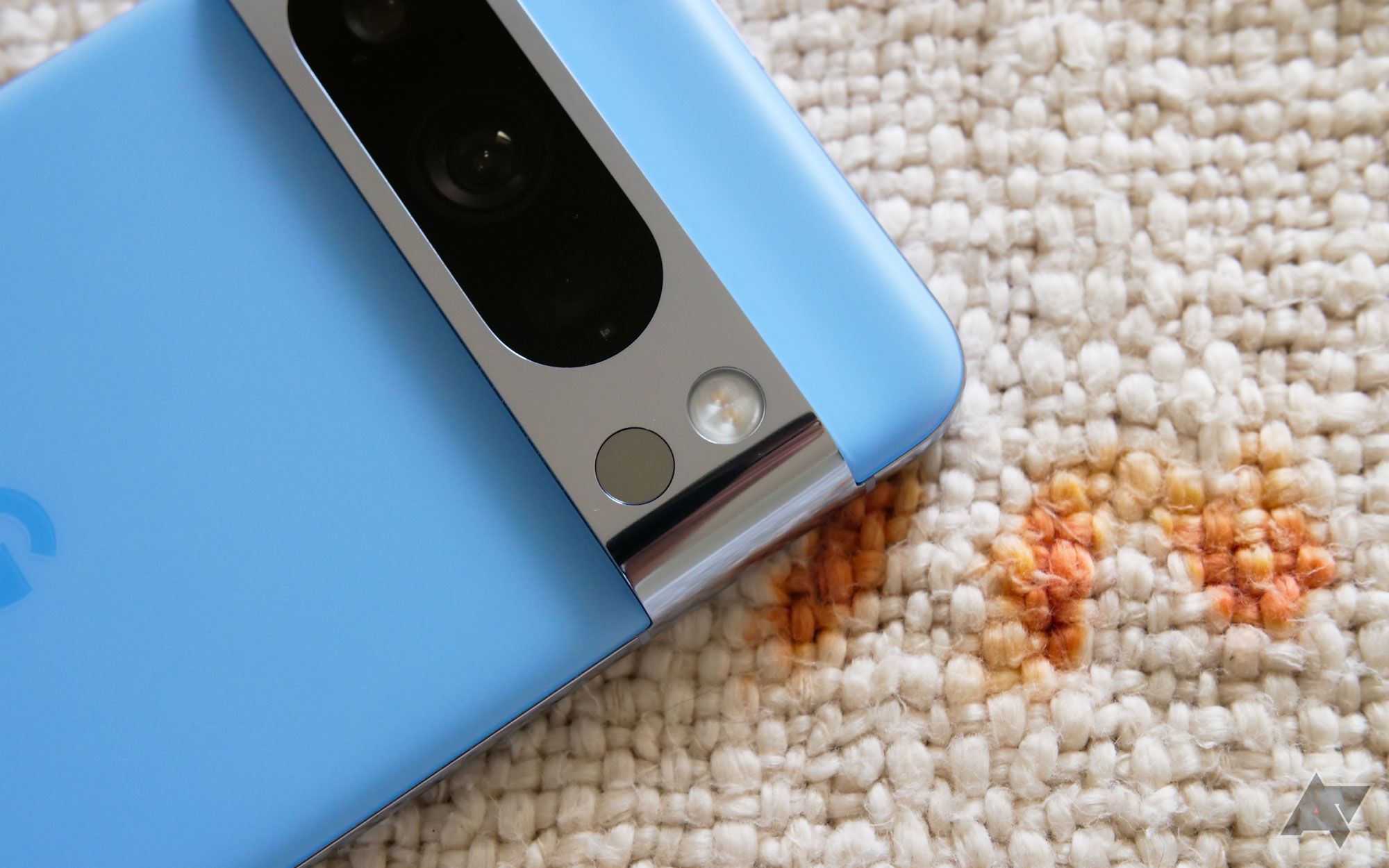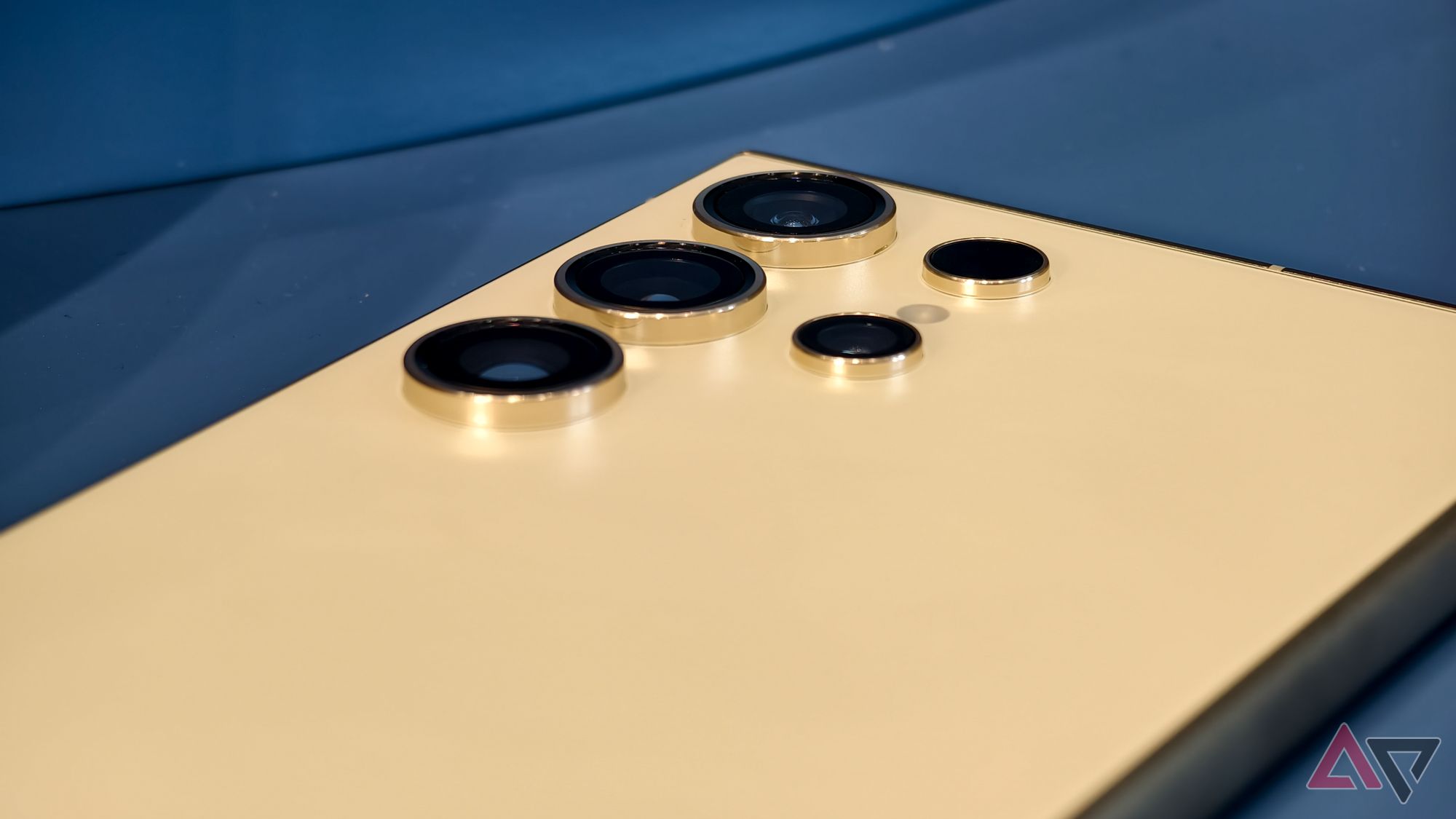-
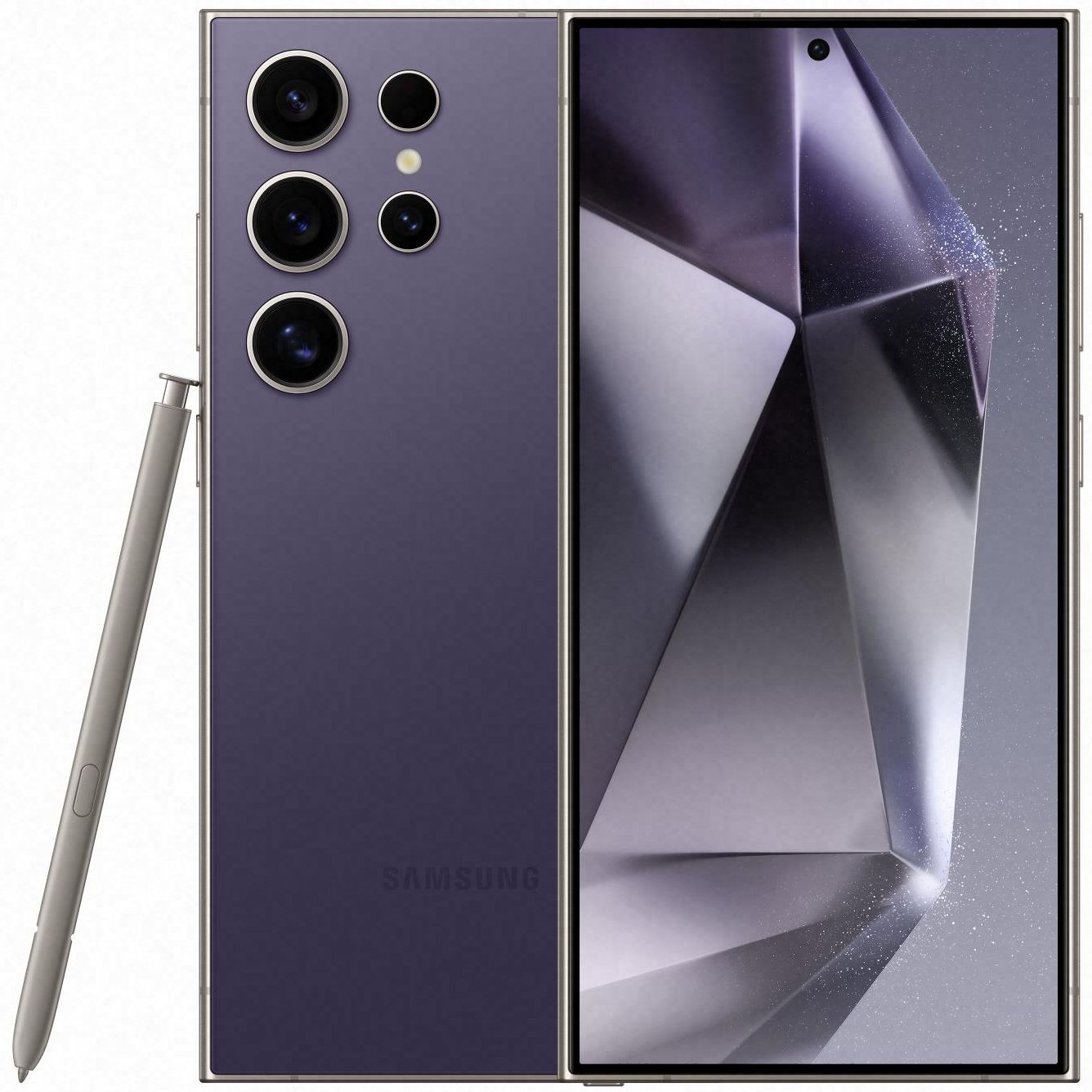
Samsung Galaxy S24 Ultra
Premium pick
While it’s not a huge departure in terms of design, the Galaxy S24 Ultra solidifies the top-level Samsung flagship’s status among today’s heavy-hitters. Its raw chipset performance, advanced camera array, user-friendly OneUI interface, and gorgeous display make it hard to ignore.
Pros- Large, bright, colorful display
- Nearly unmatched Qualcomm SoC
- Comprehensive camera setup
Cons- 45W charging lags behind other flagships
- Not much in the way of innovation
-
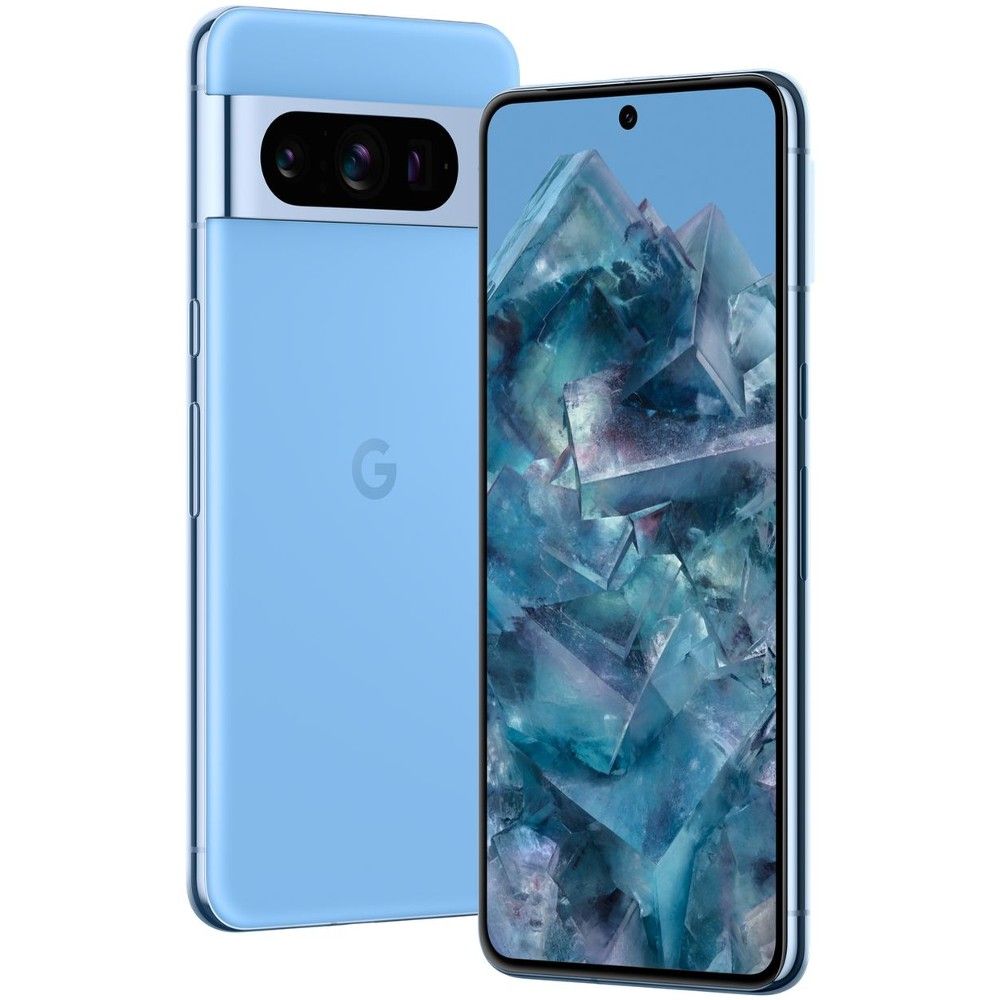
Google Pixel 8 Pro
Point-and-shoot powerhouse
$799 $999 Save $200
Google’s put forth a lot of effort to differentiate its smartphones from the competition, and the Pixel 8 Pro is the perfect evidence. It may not boast the most advanced specs, but leverages refined UI development and nearly magical machine learning-powered features to make a splash.
Pros- Fantastic one-touch picture taking
- Unique photo, video, and audio editing capabilities
- A truly different Android experience
Cons- Less-than-stellar performance for a top-end flagship
- A bit more locked down than other Android versions
We’re big fans of the Pixel 8 lineup, which is why it features heavily in all our top smartphone roundups. Google does some really interesting things with its hardware and software, delivering an experience and feature set that no other company can yet match.
But the latest iteration of Samsung’s most high-end flagship simply piles on the processing power, while leaning on its highly respected (and always evolving) OneUI Android experience.
These are bound to be two of the most talked-about handsets for the next few months, so which one’s worth your money? Considering how different they are, one’s sure to tickle your fancy more than the other.
Price, availability, and specs
While high, the Pixel 8 Pro‘s $1,000 MSRP is actually not terribly offensive for such a novel, refined device. And Google undoubtedly has its eye on the S24 family’s release, as evidenced by current discounts of $200, which result in a great deal at $800.
The S24 Ultra takes things up a notch, with a $1,300 base price – $100 higher than last year’s model. That’s not really a surprise, but it does frame the new flagship in a certain light; this phone needs to check all the boxes, or it’s hard to justify splashing out quite that much cash.
-
Samsung Galaxy S24 Ultra Google Pixel 8 Pro SoC Qualcomm Snapdragon 8 Gen 3 for Galaxy Google Tensor G3 RAM 12GB 12GB Storage 256GB, 512GB, or 1TB 128GB, 256GB, 512GB, 1TB Battery 5,000 mAh 5,050mAh Ports USB Type-C 3.2, OTG USB-C Operating System Android 14, OneUI 6.1 Android 14 Front camera 12MP, f/2.2 10.5MP sel fie camera Rear camera 200MP, f/1.7 main; 12MP, f/2.2 ultrawide; 10MP 3× telephoto; 50MP, f/3.4 5× telephoto 50MP main; 48MP ultrawide; 48MP telephoto Dimensions 162.6 × 79.0 × 8.6mm 162.6 × 76.5 × 8.8mm Colors Titanium Black, Titanium Gray, Titanium Violet, Titanium Yellow Obsidian, Porcelain, Bay Display type LTPO AMOLED, 1-120Hz LTPO OLED, 1-120Hz Weight 233g 213g Charge speed 45W wired, 15W wireless 30W wired, 18W wireless IP Rating IP68 IP68 Stylus S Pen included No Display dimensions 6.8″, 19.3:9 6.7″ Display resolution 3088 × 1440 1344 × 2992 Charge options Wired, wireless, reverse charging Wired, Wireless Cellular connectivity 5G mmWave & sub-6, LTE 5G, mmWave, LTE Wi-Fi connectivity Wi-Fi 7, Wi-Fi Direct Wi-Fi 7 (Except certain markets) Bluetooth Bluetooth 5.3 Bluetooth 5.3 Connectivity NFC, UWB UWB, NFC
Design
You know what? The Galaxy S24 Ultra doesn’t look or feel a lot different from the S23 Ultra. And that’s a very good thing. Samsung gathered the best design notes from industry-leading manufacturers and compiled them into a fantastically premium package that fits its reputation as one of the best high-end phones today.
In a stroke of genius (that everybody’s actually been asking for), the S24 Ultra’s screen is now perfectly flat, which enables more consistent touch and stylus implementation. Speaking of, the S Pen stylus slots directly into the Ultra’s boxy body, giving users a whole extra way to use their phone that the Pixel just can’t match.
Way over at the other end of the spectrum, the Pixel 8 Pro is an unabashedly Google-forward device. Heavily rounded corners, an increasingly iconic camera visor, and the soft Porcelain and Bay colorways make it extremely clear that this is a Google phone. It’s as easy to hold as it is to look at, despite being every bit as large and hefty as its most direct competitor.
In terms of physicality, they’re both quite durable, and sport IP68 protection ratings that continue to uphold the flagship standard. Thankfully, the Pixel 8 Pro also excels in JerryRigEverything’s durability test, something other similarly sized smartphones can’t claim (we’re looking at you, iPhone 15 Pro Max). Both should last for their entire software update lifespan without breaking, as long as you’re not unnecessarily rough on your devices.
Display
A race to one-up the other
Talk about competition. The S23 Ultra’s display wowed us at every turn, and the Pixel 8 Pro took it personally. Google’s big flagship boasts a borderline-absurd 2,400 nits of peak brightness, complemented by HDR10+ support and ultra-smooth 120-hertz variable refresh, built around its LTPO OLED technology. It looks, quite simply, incredible, with a 500dpi pixel density covered in Gorilla Glass Victus 2.
But Samsung didn’t take that affront lightly. The S24 Ultra model checks in with a whopping 2,600 nits peak brightness (nominal, of course; devices typically don’t reach their claimed numbers in real-world testing), as well as identical HDR, refresh, and pixel density stats. Safe to say, we’re dealing with a couple heavyweights here.
In short, we don’t expect display quality to move any needles in a direct decision between these two devices. They’re literally 1A and 1B in terms of high-end smartphone displays, and we can’t complain about either.
Software
Diverging paths of greatness
Samsung’s OneUI Android flavor gets tons of praise, as it should. It’s intuitive right out of the box, and easy to customize to your exact liking. It does a great job of enabling users to get the most out of their high-end phone and its class-leading hardware. It’s quite far from what you’d consider stock Android, but mostly in a lot of great ways. With that said, it doesn’t really push any envelopes, other than the user-friendly customizability that we wish more manufacturers would lean into.
The S24 series’ enhancements mostly come in the form of a raft of ‘Galaxy AI’ machine-learning features (yes, some people still rightly refuse to acquiesce to the “AI” nomenclature). These range from quick photo editing tools to remove reflections or add background blur to real-time language translation, smart transcription, and searching by circling parts of an image.
Google’s own Android implementation is an entirely different story. Google’s specific Android skin utilizes a relatively locked-down launcher and doesn’t offer quite the same level of customization. In its defense, Google does apparently take note of these periodic criticisms, and sometimes offers updates that give users more freedom. But it clearly has a directed vision of how its phones can best be used, and guides consumers in that direction.
In truth, that feature-focused software approach represents some of the biggest pros of the Pixel 8 lineup. Google’s Pixel machine-learning features came first, and apply to video capture, enhanced zoom, and audio transcription and background noise removal.
There’s one more area that’s a tie: in the current software support arms race, both Samsung and Google have declared they’ll offer a full seven years of software support to their latest flagships. That means seven full Android version updates, plus security patches for the same period.
Performance
Sorry, Google
Avid Android Police readers are likely quite familiar with our praise for Google’s two most recent phones. We love ’em, and we’re not shy about explaining why. But you’ll certainly notice that neither we, nor anybody else, claims the Pixel 8 Pro as the fastest phone in the West. Is the Google Tensor G3 a fast Soc? You bet. Does it match the performance of the overclocked Snapdragon 8 Gen 3 for Galaxy? Absolutely not. And is that a major dealbreaker for most people? Honestly, it probably isn’t.
Somewhat ironically, Samsung itself manufactures the Tensor G3 on Google’s behalf (although it’s an entirely separate department from its smartphone wing). The cold, hard truth is that the Tensor family cannot and has not ever been able to fully compete with Qualcomm’s chipset design and performance. The latest iteration of high-end Snapdragon SoC swaps out one of the efficiency cores of the Gen 2 for an additional high-powered core, and balances that out with increased memory bandwidth and a modestly upgraded instruction set architecture.
If you absolutely loathe stuttering and slowdowns, know that the S24 Ultra won’t ever bother you with that nonsense. It’s the most powerful chipset we’ve seen outside of Apple’s A17 Pro, making it easily the best-performing Android platform to date. The Google Tensor does enable the Pixel’s machine learning features, but it also draws more power, runs a bit hotter, and doesn’t crunch numbers quite as quickly. We used to give the Tensor the benefit of the doubt for the sake of its machine-learning prowess, but Samsung seems to have mostly caught up there too.
There’s one major (and slightly unfortunate) quirk though: the EU version of the S24 Ultra comes with one of Samsung’s in-house Exynos processors, rather than the 8 Gen 3. Samsung offers a handful of reasons why it continues to choose this less-than-ideal SoC line for certain markets, and far be it from us to question its decision. The flagship Exynos SoCs just don’t see the same results as Qualcomm’s chips. That’s just something to keep in mind if you’re buying outside the US market.
Battery life
At least Google’s getting better
We won’t make any excuses here: both the Galaxy Ultra and Pixel Pro offerings of the last few years haven’t quite won any marathons when it comes to battery life. That’s understandable, because they’re as big and bright as can be.
But in some positive news, the 8th-generation Pixel Pro has made strides as far as all-day battery performance, in stark contrast to its recent predecessors. Its latest Tensor SoC doesn’t really break new ground in terms of efficiency, but it does just fine, and in fact, rarely puts up a fight when you ask it to last from sunup to sundown. Happily, the Pixel 8 Pro’s battery effiency generally satisfies for most use cases.
We won’t know exactly how long the S24 Ultra lasts until we can review it in full ourselves, but on paper it should win the battery race thanks to improved power efficiency from that Snapdragon chipset – though we don’t expect a big gap between the two handsets.
It’ll also win the charging race, but really there are no winners here – we’re still sitting here trying to find the people who decided that 30W and 45W charging (for the Pixel and Galaxy, respectively) are good enough for ~$1,000 phones in 2024. Both are slower than competing models from the likes of OnePlus and Motorola, but the S24 Ultra will be that little bit faster. Naturally, both will charge wirelessly too.
Cameras
And now for something completely different
A few years ago, consumers and experts industry-wide basically raked Samsung over the coals for its image processing and general photo/video implementation. That’s no longer the case in 2024, when the biggest complaint against Samsung’s camera setups is that photos are a little too saturated.
The overall picture of the S24 Ultra’s cameras is a great one. There are four rear lenses this time around, with the returning 200MP main camera joined by an ultrawide and a pair of telephotos, at 3x and 5x zoom respectively. We won’t know how well they truly perform until we review the phone, but we have high hopes.
But we’d be remiss to act like the S24 Ultra suddenly leads the picture-taking smartphone pack. The Pixel 8 Pro offers one of the most expansive feature sets of any phone camera, powered by a triple rear setup featuring main, ultrawide, and telephoto.
As it stands, both camera systems excel. The Pixel will take the edge for simplicity’s sake, with point-and-shoot performance that’s unmatched. But that additional telephoto lens gives the S24 Ultra additional versatility, and it’ll be the phone to grab if shooting from afar is up your street.
Should you buy the S24 Ultra or Pixel 8 Pro?
Harder questions are seldom asked. They’re both great phones, but they’re clearly very different beasts. As tech nerds, we always appreciate improved performance paired with increased efficiency, which the S24 Ultra delivers. But it’s also strikingly similar to the S23 Ultra, and while that was a truly great and industry-leading device in 2023, we’d really like to see more innovation for the latest Galaxy phablet to really win us over.
As predictable as it might be, we’re making the difficult decision to continue siding with Google in this particular fight. The Pixel 8 Pro is such a fantastic device, in fact, that even AP’s resident Galaxy apologist evangelist enthusiast Zachary Kew-Denniss considered jumping ship from the Korean tech giant to the AI-friendly smartphone manufacturer. To be clear, there’s nothing wrong with the S24 Ultra; we just prefer the novel, interesting, and day-to-day-useful experience the Pixel 8 Pro offers – not to mention its significantly lower price point.

Google Pixel 8 Pro
Editor’s choice
Power without the price
$799 $999 Save $200
Nobody does machine learning smartphone magic like Google, and its Pixel 8 Pro drives home both that novelty, and the increasingly iconic Pixel design language. While it’s not the absolute fastest performer, it is still one of the best high-end smartphones you can buy.
The flip side is that you might be willing to pay more for peak performance. If that sounds like you, you’ll probably love the Galaxy S24 Ultra. It’s a near-perfectly refined phone in just about every way, including display quality, battery life, performance, customizability, you name it. If your budget is big enough, the S24 Ultra is hard to beat.

Samsung Galaxy S24 Ultra
Runner-up
Pure performance
It’s a masterclass in traditional smartphone design. With high-end hardware, top-of-the-line materials, an absurdly bright and colorful display, and a much-adored user interface, it’s almost impossible to find fault with the S24 Ultra. Sure, the price is pretty high, but that’s to be expected when dealing with the best of the best.
Source link

